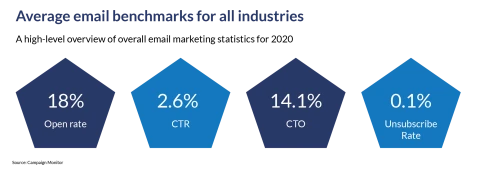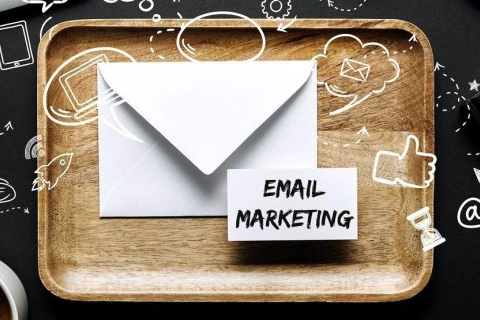Email Marketing in 2021
—With the rise in the prominence of Social Media Marketing, there has been lots of speculation that Email Marketing is dead.
It most definitely is not!
Email marketing remains one of the most successful and cost-effective ways to reach customers. It’s certainly more effective and efficient than social media marketing.
eMarketer reports that 81% of retail professionals say email marketing is a successful way to acquire new customers, compared to 51% who think the same about social media. That makes email more than 40 times more effective for acquiring new customers than either Facebook or Twitter.
Email Marketing is believed to be better at retaining customers than social media. This is great news for marketers, since customer retention is both lucrative and cost-effective for businesses.
How 2020 shaped email marketing
During the uncertainty of the pandemic, businesses needed to shift their strategy and reach out to their current customers. Email became the main channel to inform people about new working hours, new online opportunities, virtual events, etc.
By April 2020, overall email volumes were skyrocketing— particularly, emails related to the pandemic. At the end of May, the number of emails with coronavirus keywords in the subject line peaked around 7%, with 1 in every 15 emails featuring a COVID keyword. COVID communications were dramatically impacting email programs and creating lasting changes to the way we communicate during a crisis.
Campaign Monitor analysed over 100 billion emails sent globally between January and December 2020 and reported on their finding, identifying these key email benchmarks across all industries:

In previous times Tuesdays and Thursday have always been seen as the best days to send your emails; however, since the pandemic Campaign Monitor also reported a shift in this. Fridays used to be the day that everyone was winding down, getting ready for the weekend or a vacation, but the Click to Open rate on emails sent on a Friday has seen a rise due to the restrictions in place. It is also believed that a case of inbox competition could also have influenced the changes in customer engagement.
Key trends for 2021
So, how will the changes of 2020 inform your email approach in the coming year? Here are some key trends that will help you plan your email marketing strategy for 2021.
Keep your content positive and unique
Your readers want to see something new and see you as a useful source of information. Email marketing isn’t just about selling, it is about telling your story and nurturing your customers.
Keep your subject lines simple. You want to create a meaningful amount of attention without trying to say too much in one line. Avoid just using your subject line for click bait.
When creating your content, think about how you can help your customer succeed. Can you help them save time, be entertained or more connected? Create content that utilises your knowledge, personality and community spirit.
Use email personalisation
Email’s biggest advantage as a marketing tool is that you can automate personalisation at scale. This means sending targeted emails to each of your subscribers. So whether you have one hundred or one million subscribers you can still make each one feel special.
Understand your customers' journey and use your emails to stay connected, using your automations to send personalised messages. Consider a welcome email with clear call to action buttons or a survey, to help define the interests and get to know your customers better.
Double check your transactional emails. A great transactional email can help you grow your list, generate additional revenue, capture customer feedback, and make your customers happier.
Manage your Audience
Subscriber engagement does not remain constant. Over a 2 or 3-year period it fluctuates between full on and no engagement on a regular basis, depending on where they are in the purchase cycle.
You have probably tried segmenting your audience by demographics and even psychographics. Why not segment your contacts by behaviour instead? There are a couple of ways you can do this:
Purchase behaviour: Segmenting by purchase behaviour disentangles the varying trends and behaviour patterns that customers have when making a purchase decision.
Benefits sought: Grouping your data by benefits sought helps you narrow down the specifics of what drives customer purchases, revealing which product feature or service aspect they feel most attuned to.
Timing and occasion: Occasion-based segmentation categorises customers who are most likely to interact with your brand or purchase from your website on either specific occasions or set times.
Customer loyalty: Your loyal customers are the backbone of your business. Loyalty-based segmentation measures the level of loyalty a customer has with your brand, either through a rewards program, number of purchases, or general engagement with your marketing efforts.Target them with promotional emails that are more likely to hit the spot based on their past purchasing behaviour.
In 2021, we can expect to see a continued rise in e-commerce purchases and email signups. With email marketing as big as ever, make sure you stay ahead of the curve by adopting automation and personalisation processes. And use your data!



